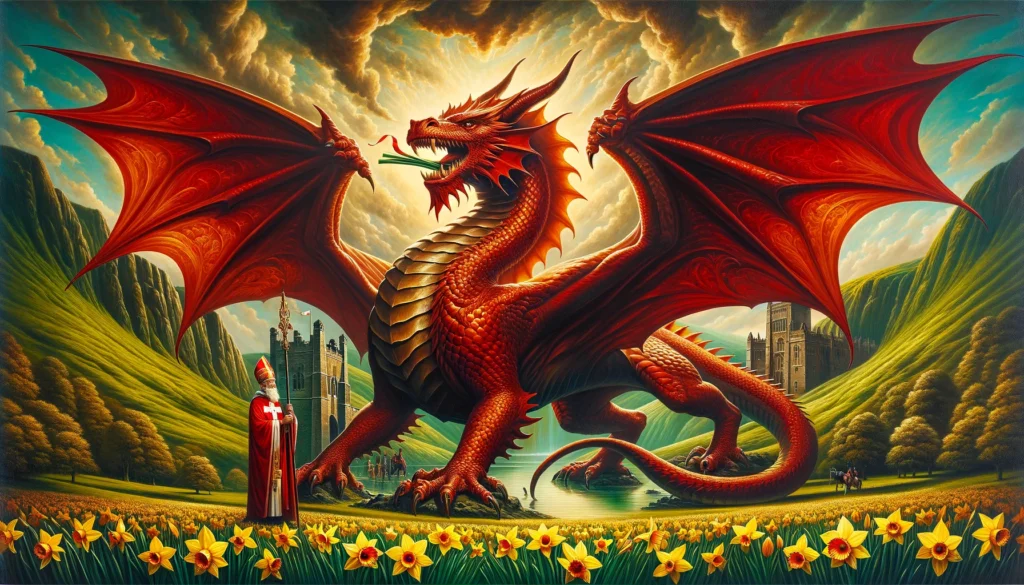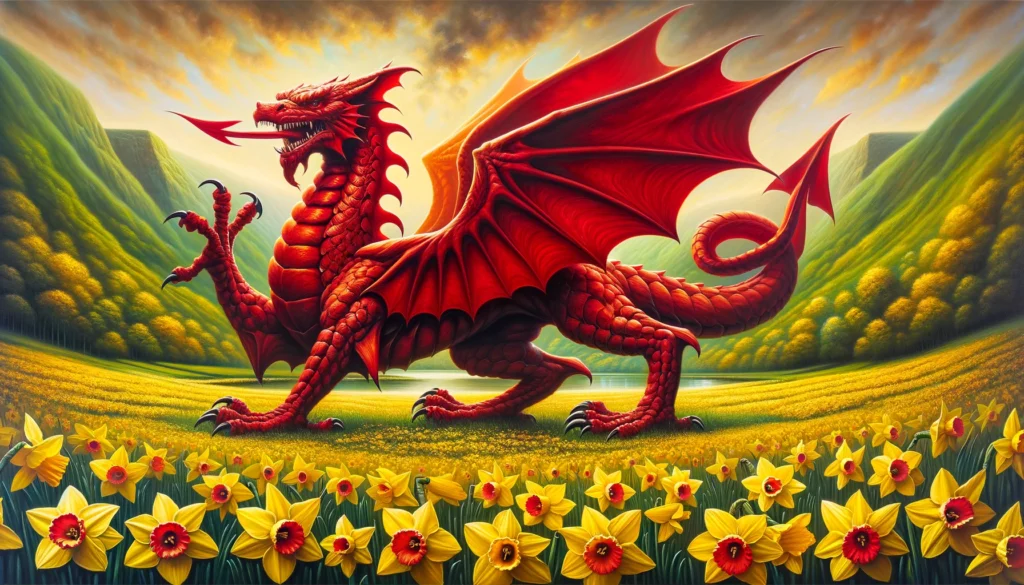On the 1st of March, Wales is awash with the vibrant hues of daffodils and the proud fluttering of the Welsh flag, as the country celebrates St. David’s Day. This national festival, in honour of the patron saint of Wales, St. David, is a day of cultural pride, where the ancient and the modern merge in celebration of Welsh identity and heritage. Central to the festivities, and indeed to Welsh national identity, is the iconic red dragon, Y Ddraig Goch, a symbol that has deep roots in Welsh history and folklore.
The Welsh dragon, depicted majestically in the midst of a sea of daffodils, embodies the spirit and resilience of the Welsh people. With its fierce visage and powerful stance, the dragon represents strength, wisdom, and the enduring presence of Wales through the ages. It is a symbol that resonates deeply, not just on St. David’s Day but throughout the year, as a representation of the Welsh spirit and their enduring culture.
St. David, or Dewi Sant in Welsh, was a 6th-century bishop known for his simple, ascetic lifestyle and his ability to perform miracles. Legend has it that he founded a Celtic monastic community at Glyn Rhosyn (St. David’s) on the westernmost tip of Wales, where St. David’s Cathedral stands today. His most famous miracle was when he caused the ground to rise beneath him so that he could be seen and heard by all during a sermon. St. David’s Day commemorates his death on 1st March 589 AD, and it has been celebrated by the Welsh for centuries as a day to honour their heritage and their patron saint.

The dragon itself is a symbol of resistance and endurance. According to mythology, the red dragon represents the Welsh fighting the invading Saxons, a battle of identities that is as much a part of Wales today as it was then. The imagery of the red dragon battling the white dragon, which symbolised the Saxons, is a powerful narrative of struggle and victory that has been embraced as a key emblem of Welsh identity.
The celebration of St. David’s Day is marked by parades, singing, and the wearing of traditional Welsh attire. Schools and communities across Wales hold special assemblies and concerts, and Welsh cuisine, especially cawl (a traditional Welsh soup), and Welsh cakes, take centre stage. The daffodil, another symbol of Wales, is worn proudly alongside the leek, which St. David advised the Welsh to wear in their caps to identify themselves in battle against the Saxons.
In essence, St. David’s Day is a vibrant celebration of Welsh culture, history, and identity, encapsulated by the powerful symbol of the red dragon. It is a day for the Welsh to stand proud, to remember their roots, and to look forward with hope and resilience. The dragon, amidst the daffodils, is not just a symbol of past battles; it is a beacon of the enduring spirit of Wales, a nation with a rich past and a promising future.
For more dragon content please subscribe to the Everything Dragon YouTube Channel or follow us on Instagram




